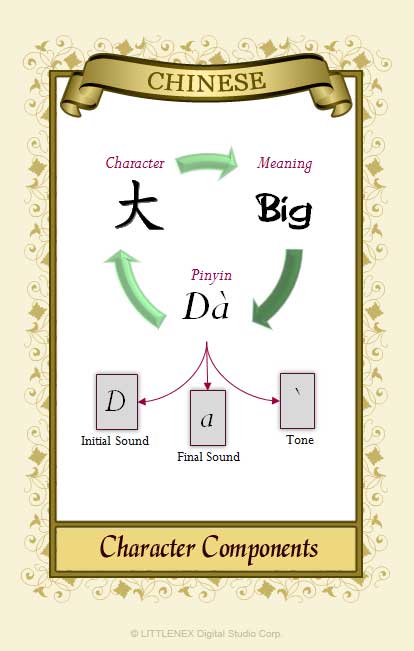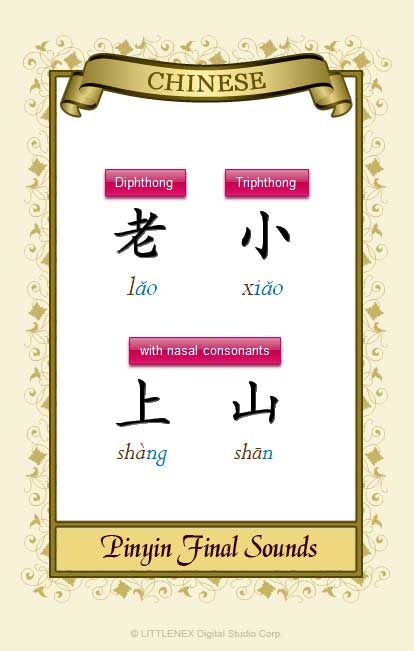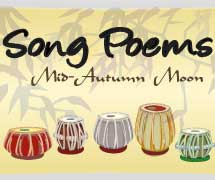This is the lesson attached to the Chinese learning game Song Poems 1. There are 3 games in the series, totalling 175 essential Chinese characters included in the new HSK level 1! Play the FREE version of the game or join us and get the full version!
HSK Level 1 is the first level of the new HSK exams. If you would rather learn the vocabulary for the classic HSK exams, play the Tang Poems game series. Learn more on the HSK exams.
Pinyin has been developed in the 1950s to read Chinese words using a western-style alphabet.
Of all the letters of the English alphabet, 25 letters are used for pinyin (20 consonants and 6 vowels). The letter is not used, while the letter (with an umlaut, the two little dots above the ) is added to represent the equivalent of the French pronunciation of as in tutu.
In addition to that, we have 3 combinations of two letters: , and .
And on top of that, pinyin also has four tones represented by markers.
Morphemes (or syllables) have 3 components:
A morpheme is composed of an initial and a final. An initial is the first sound of a morpheme, usually a consonant. A final is the rest of the morpheme. The final can be a single vowel, or a combination of vowels, or a combination of vowels and nasals (a nasal is or ).


Examples
HSK stands for Hanyu Shuiping Kaoshi, which literally means Chinese Level Exam. It is the equivalent of the TOEFL for Mandarin. The HSK certificate is valid for two years.
The HSK test started in 1984 as a Chinese proficiency test for foreigners and Chinese citizens for whom mandarin was a second language. It began to be used in the mid-1990s as part of the admissions process for applications to Chinese universities.
A new HSK test appeared around 2005 alongside the classic one. The new HSK test consists of 6 levels of proficiency. The classic version of the HSK test has 4 categories (Beginning, Elementary, Intermediate and Advanced). This situation lasted until 2010, when it was decided that only the new version would be recognized.
However, the classic HSK continues to operate as an advanced proficiency test. In contrast, the new HSK test aims to appeal to students with minimal mandarin proficiency. The first level of the classic exam (Beginning) corresponds to about level 4 on the new HSK exam, while the remaining new levels correspond roughly to the classic Intermediate level.
The new HSK test is made up of listening comprehension and reading comprehension sections, and contains a total of 40 items to be answered within 40 minutes. Students must score at least 120 points to pass the exam. Students who successfully pass the HSK Level I can understand 150 commonly used words and basic grammar patterns, use very simple Chinese sentences, and meet basic needs for communication. The HSK Level 1 is intended for students who have studied Chinese for a semester with 2 to 3 class hours each week.
